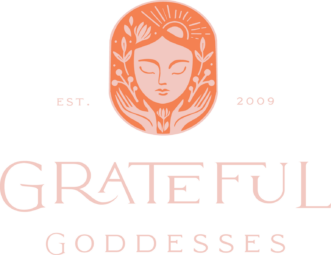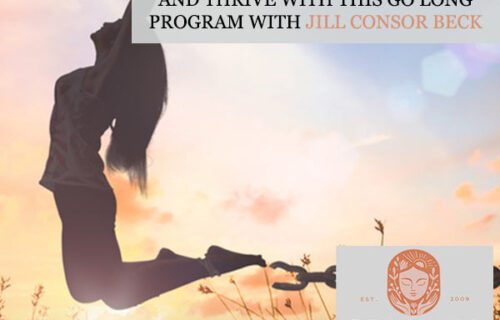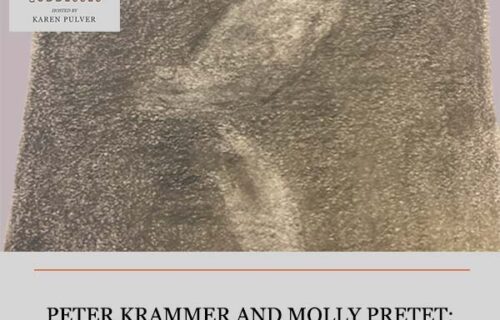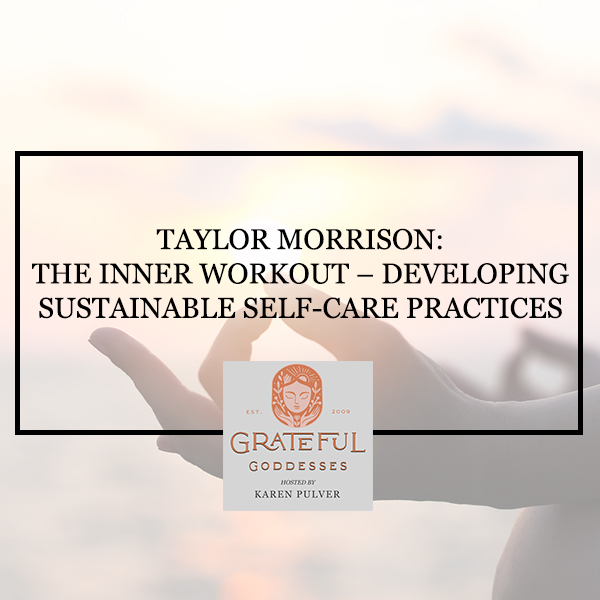
Taylor Morrison: The Inner Workout – Developing Sustainable Self-Care Practices

Self-care is not a selfish act. It is a necessary act to encourage our well-being to better take care of others and our communities. What if there’s a workout that allows you to connect with your mind, body, and spirit from a place of nourishing love? The show’s guest today is Taylor Morrison, the CEO of Inner Workout, a wellness class format that helps participants practice self-care. Taylor is on a mission to help others beat burnout through sustainable self-care practices. Joining Karen Pulver and the Goddesses, she discusses how listening within and responding to your body and mind in the most loving way possible is vital to self-care. Tune in to your body, and don’t try to aspire to the idealized image that society portrays. Listen to this episode for more self-care tips!
—
Watch the episode here
Listen to the podcast here
Taylor Morrison: The Inner Workout – Developing Sustainable Self-Care Practices
Taking Care Of Your Needs In The Moment Will Help You In Day To Day Life
Thank you for joining us on the show. I have already done a 5-mile run, 30 minutes of weight training, finished it off with a ten-minute yoga and a short meditation. I wish I could do that workout every day. It would be hard to sustain. I do love working out. I love trying different types of workouts incorporating strength training and cardio as well as meditation and yoga. Meditation is working out your brain. I wanted to invite our featured goddesses on the show to start because I would like to ask them how they work out. What kinds of workouts do you enjoy doing? Perhaps you can tell us a little bit about it. Michelle, how do you work out?
Inner workout is like a mirror to see yourself as you are in that moment and what you need. Share on XNormally, I meditate. I do beautiful meditation that Wendi Cohen helped me with and she was a featured goddess with you. I prefer to work out in the morning. It starts my day and I feel happy. That usually involves strength training. I have been running lately. When the weather gets a little warmer, I’m going to hike. I’m in California and it’s beautiful.
You have fun doing that, which is great.
I have to start it with Green Tea.
Rachel, how about you?
I like to start my morning doing Tibetan exercises. It’s this whole routine of five exercises that are supposed to be a most perfect combination of exercise and it’s like a fountain of youth but I’m not motivated enough to do a big workout before I get my day going. Usually, at some point, I try to fit it in.
You also play tennis and ping pong is also a good workout because you are having fun and you are playing ping pong with your son.
It is perfect during COVID, during the quarantine.
You can watch Rachel playing ping pong on the show. There’s a short video clip of her playing. She’s quite competitive. Lara, how about you?
I love a cardio workout and a morning workout to start my day. I had been focusing on strength training these days as well. I was inspired by our guest, Taylor with her philosophy of needing to be in tune with your body and its self-care and I took my day off, which is important. I love spinning, running, strength training, a good stretch routine and a good combination of all of them.
Inner workout is a self-care experience but within the context of the community. Share on XYou have a multi-disciplinary approach. I have worked out with Lara. She is a workout coach. She’s tough but she’s good. I wanted to introduce our guests. Our guest is Taylor Elyse Morrison. She is on a mission to help others beat burnout through sustainable self-care practices. Taylor studied Human and Organizational Development at Vanderbilt University. She started her career in a corporate leadership development program, went on to become the first full-time employee and Vice President of Operations at a wellness startup and is now a Founder herself. Taylor is a certified group fitness instructor and a certified 200-hour yoga teacher. Welcome, Taylor to the show.
Thank you for having me.
Thank you for joining us. Did you work out?
No. I didn’t. On Sundays, I like to take a day off. I walked my dog and that was about it.
Can you explain to us what is Inner Workout?
There are a couple of ways I can answer that question. Inner Workout as a company is, we exist to help people build the skill of self-care, which we define as listening within and responding in the most loving way possible. Inner workout, in the namesake practice, blends movement breathwork, journaling and meditation into this cohesive, seamless practice so that people can get the benefits of self-care within this class but also start to listen and notice, “This is what I need.” You read in my bio that I’m a trained yoga teacher. It’s not like yoga in the sense that you have to be in this pose or doing this thing for a certain amount of time. It’s meant to be intuitive and to help people understand what they need for that day.
Is there cardio and weight training involved in Inner Workout?
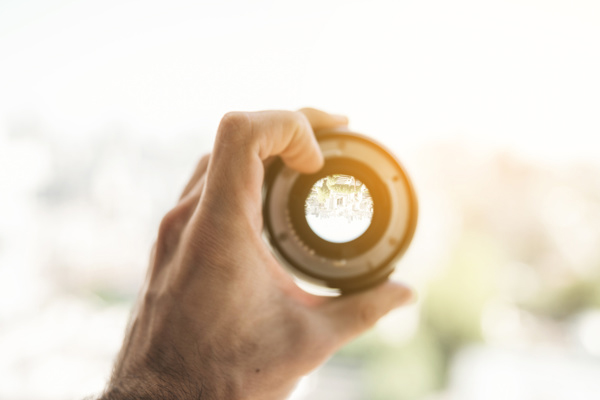
No, there’s not. It’s called Inner Workout because it is an inner workout. You are moving, breathing and doing things that might be associated with more of a typical fitness workout. The focus is within.
Is it to see how you are feeling in terms of if you are in pain or also how you feel and relate about your relationship to working out and moving your body?
When we are talking about listening to it and responding in the most loving way possible, we are looking at the five dimensions of well-being that are rooted in Yogic Philosophy. They stem from the coaches. We talk about them as the five dimensions. There’s your physical dimension, an energetic dimension, mental and emotional, wisdom and bliss. The way that the class progresses is a journey inward. When we talk about how you are feeling, it’s about what you need that day. When you do the movement piece, you are starting standing, then you are doing some seated movement on the mat. In the end, you are stretching but everyone needs something different.
Sometimes, it feels good to hold in a certain pose. You are encouraged to do that. Sometimes, if something isn’t accessible for you and your body at all or maybe that day, you are encouraged to find a different alternative. It’s not about, whether you are in pain or not. It’s figuring out what would best serve you. The whole class is facilitated in that way. You are having to do this check-in, understand, “This is what I need,” and then move based on that rather than following the facilitator at the front of the class.
What’s unique about your program is you start by having your participants Take Care Assessment.
That’s separate from the Inner Workout class. You can take an Inner Workout class and do that on its own. Take Care is a separate offering. It’s something that you can do, whether or not you enjoy doing Inner Workout classes.
I was able and had the privilege to do it. I highly recommend it because it does go through all of those concepts. My visual result, my highest is physical and bliss. My lowest was wisdom. That means self-trust, focus and aligned action, can you explain my results? It seems like I was the highest in bliss, which I’m happy, too. I like that result. Can you discuss this a little bit?
Taking care of yourself is NOT a selfish act. Share on XThis is all rooted in Yogic Philosophy. We are also taking things from Physiology and Modern Science to help get some tangible measurement. That being said, the Inner Workout is a mirror. It is a self-assessment. You answer the questions. It’s based on how well you know yourself to a certain extent but it’s helpful sometimes to input information and then to see it come out as a result on the page. It’s a great conversation starter. I like to take mine every few months. This is giving me some new information for where I can start to focus my own efforts.
In terms of yours being the highest with bliss, a lot of times when we talk about bliss in the cultural sense, we almost talk about the sense of being so relaxed that you are almost disconnected. Think of it after a massage and you are like, “I’m blissed out.” It’s normally the sense that you have melted into the massage table. That is a wonderful feeling. When we are talking about bliss in the Take Care Assessment and the Inner Workout sense, it’s a sense of being hyperconnected.
You will see that there are three sub-dimensions on the profile. There’s the connection to self, to community and to something bigger than you whatever that looks like on your end. I’ve got your results. It looks like for you that connection to the community was your strongest. Overall that was a strong area. That was your strongest. The other thing about the Take Care Assessment is that we can take it even multiple times throughout the day.
You would get different results because it’s a point-in-time measurement, which is important. After all, you are constantly growing and changing. If you think of self-care back to that Inner Workout definition of listening within and responding in the most loving way possible, you are going to listen and hear different things about what you need every time. If you say, “This is what’s worked for me for the past few months.” All of a sudden, there’s a global pandemic. You might need different things.
This is a way to help you realize, “Something has shifted in me,” and to give you a little bit more of a framework. For the wisdom dimension, when we look at the tradition that it stems from and how we talk about it in the context of Inner Workout, it is about this connection into your own inner knowing. The three sub-dimensions underneath is self-trust, which is like, “Do you trust that you know what you want and what you need?” You then get focus. Focus sometimes can be confusing because you might be like, “I can meditate for a long time. I can get lost in a task.” That isn’t the only area of focus. I see for you, that one was a little bit lower.
Focus is all about, “Are you able to be in the present moment?” You are the most powerful when you can be in the present. It’s not asking questions about being able to get into a flow state. It’s also looking at, “Are you always jumping ahead and looking at the future?” It is what I tend to do a lot. Are you spending a lot of time in the past? That question in that focus area is looking beyond, “Can you get something done? How are you easily distracted?” The aligned action pieces are, “If I trust myself if I can listen to my inner knowing, that’s great but what am I doing with that? Am I acting based on what I hear from my inner knowing?” That’s a little bit of a breakdown of what those three areas specifically look like.
It was helpful to me because I do know that I can focus on a task at hand but I multitask quite a bit. It’s a great reminder that it’s important to be present and focus on one thing at a time, especially in our world where there is much going on. I do think of the future and the past. “What’s going to happen to our world and to our community?” I need to think, “Everything is okay right now in my being. I’m okay.” I try to be present. That was a good tool to help. I loved that survey. Anyone can go online to do that survey. How could they do that if the readers want to do it?
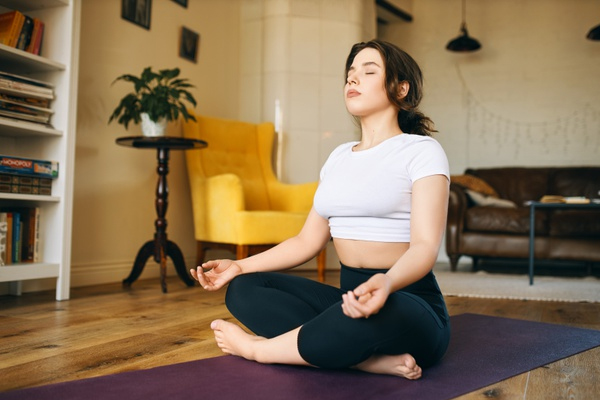
If you go to InnerWorkout.co, on the first page, there will be a link to purchase the Take Care Assessment.
Our future goddess Lara has some questions for you.
After looking at your Instagram feed and seeing all the amazing comments people are saying after they experienced your inner workout, it’s incredible to see how grounded people are feeling. What I have found is there are so many conflicts people can have with not having the confidence to go into the gym. The physical workout part for a lot of people is difficult. How do you get your clients to understand that the mind, body, spirit piece is important for their physical well-being?
What’s nice about Inner Workout is that the people who are drawn to it are the people who are, to some extent, aware of that connection or interested in cultivating it and trying it on their own. That’s why we haven’t done anything in person for now. That’s why there have always been online class offerings as well so if people want to try something at home without the fear of going into the gym or being around other people, they can still have this experience on their own. That’s something that has been helpful but also the way that we facilitate Inner Workout classes is that it is a self-care experience but in the context of the community. We facilitate in rooms that don’t have mirrors.
If we do happen to be in a room with mirrors, we turn away. It’s about you getting the feedback internally and not about you looking at yourself, “How do I look as I’m doing this move? How does everyone else look? They chose to stay in this longer. Maybe I should go back to doing that movement.” You can be focused on yourself, which helps a lot of people be able to get into it and feel more comfortable. We even say it like, “Everyone is focused on themselves. You can do the weird thing that you feel called to do because that person next to you are focused on what they need to do, try and defuse any fear that way.”
I love turning away from the mirror. You are your own mirror. That’s an amazing way to look at it.
Rachel?
I love what you are saying about not having a mirror. I do practice a lot of yoga and the studio I go to does not have mirrors anywhere. Everything that you are saying is resonating with me because I feel like that’s always your challenge in a workout place is not to be competitive with others. In yoga, I’m constantly challenging myself not to look at all of these women in their beautiful poses that I can’t reach and just go at my level. I was wondering if you could talk to us a little bit more about guiding us through what this workout looks like, what you are attaining and what you are doing?
People are their own experts in their own experience. Share on XEvery class has an intention, which is like a theme that guides the class. It might be joy or gratitude. We did one fairly on grief. Everything will be tied back into that intention. Inner Workout is typically mat-based. Sometimes when we are doing office things, we will do a shorter chair-based version. You start standing and do a movement that’s designed to warm up your body, get you used to listen to your body and share some of that initial, “Am I allowed to listen to myself?” feelings. You then get being on your mat.
That will be movement, either from a table position or seated stretching but you go onto your mat. The final is stretching that space laying down on your mat. Those are the three parts of physical movement and then transition into breathwork, which is always going to be tied back into that intention for the class. You will spend a few minutes doing a guided-breathing practice then you transition into journaling. There are always two journaling prompts throughout the class. It’s a chance for you to reflect.
The physical is pretty easy, like the physical mats and physical dimension. The breathwork piece, when you look at it, you will get philosophy, your breath is connected to prana, the lifeforce energy. There are all kinds of physiological benefits to intentional breathing. The breathing piece is a way to regulate your energy. We then go into the journaling with the two journaling prompts, which are a way to access the mental and emotional dimensions. You are dealing with your thoughts and feelings.
The prompts always relate to that intention then you move into a time of meditation, which is often more of guided visualization. It’s not stripped down where you are sitting there counting your breaths or having that awareness. There’s normally a guided visualization, which is tied back to the intention for the class. At the end of the meditation, we invite people to take a couple of deep breaths and to ask what they need to complete that class. That’s the self-care practicum where if self-care is listening within and responding and you are doing that in little ways throughout the class.
This last piece is like, “What do I need to make this class feel like it was the best hour of my day?” For some people, that’s laying there taking a more traditional Savasana. For some people, they were like, “I want to go back and write some more in my journal.” Other people are like, “This stretch would feel good.” You spend the last few minutes doing whatever you need to do. That’s then the end of the class. Everything is guided by music and is tied seamlessly together. It’s not like, “We did the physical part. Now, it’s time for breathwork.” You are flowing into each piece.
Did you design this class? I am impressed.
Yes.
Can you tell us about your journey to how you found Inner Workout because you used to be in a corporate job?
I have always been entrepreneurial since I was a kid. Everyone who’s known me since I was a kid knew that at some point, I would be working for myself. That wasn’t a surprise. I was working in corporate. It wasn’t necessarily feeling super challenging or fulfilling. Where I worked, they make it easy for you to get lulled and to want to stay there because they are one of the companies that still have a pension on top of your retirement plan. You start with a month of PTO. You can get comfortable quickly.
I realized I could go down this path but I was looking at the people who were at the vice president level even the senior vice president level and realizing that I wasn’t super excited about the life that they were building. I remember a time when I was working, I was like the low-person on the team but I was helping with our department’s contribution to the board deck. Even the vice presidents are running around. It’s like a holiday weekend and they are having to work all weekend because the president of the company had been in Aspen before the holiday weekend. He was ready to work on it during the holiday weekend.
It was a whole thing. I thought if I moved up the ladder, I would not have to deal with these things but they were still having to deal with these things. I started looking for something else. During my senior year of college, I founded a brand strategy company. On the side, I was always working with clients. I wanted something different. I started looking at the startup space and ended up joining a health and wellness company. It’s my first full-time employee. I hope that I won’t have to go back into a full-time job but if I do, I love the startup environment. I love being able to see that there’s a problem or an opportunity.
Sometimes in a day, we would have a solution but within a couple of weeks or a month being able to get something on the ground. I ended up going back to work at a startup that was owned by the organization that I worked for. The startup is loose here because when you are working at a startup, that’s funded by a Fortune 100 but you get some cool startup perks. In the time that I had left that organization, go to the startup and come back, they were still working on projects that had started while I was there.
To give you an idea of how long things were taking, when I did that second round, I had thought that this was my dream job. Even the first time I was at that organization, I would have been like, “It would be cool if this position got created.” It did get created. I was like, “Taylor, you might be great for this because of your startup experience.” It still felt corporate. I have nothing against corporate. I knew it’s not for me. I started thinking about what would it look like for me to not be there anymore. I did a lot of writing and thinking, “We’ve got to have this much money in savings.”
I have some clients but I would want to have a part-time job that I know that I will have this base amount of income, make sure that our mortgages are covered and the basic things. There was one more thing on my list. I checked and looked at our accounts, we did have that much money in savings. A couple of weeks later, I met someone who I thought was going to be my mentor. He did end up being that. He also, by the end of the meeting, was like, “If you are thinking that the next thing you need is a part-time job, you would be a great fit at my company.” I had a soft job offer from him. A couple of weeks later, I gave my two weeks’ notice.
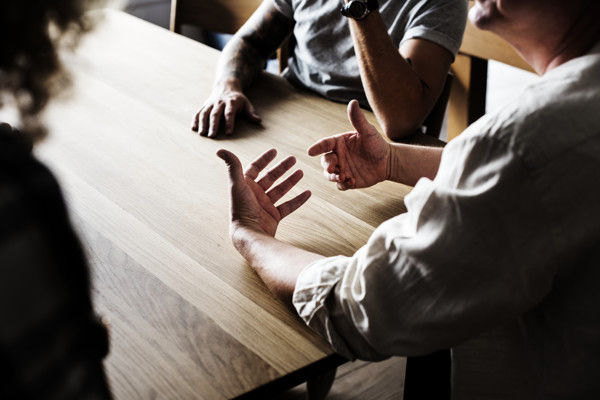
At that time, I thought that I would be focusing on my brand strategy firm and building that up as I was working this part-time business. I have been passionate about talking about self-care. I saw personal and professional opportunities there. I bring myself out a lot. I was working full-time and running a business on the side. During this time, I planned the wedding and got married. We were like buying a condo. We were doing a lot of things. I also was volunteering a lot too with multiple organizations.
It ended up at this place where I would be getting overwhelmed and feeling like I’m underwater. I then would maybe quit a couple of things or try and change my capacity, and then peek over the edge and then get underwater again. I started thinking a lot about self-care and what that would look like for me. That’s when that definition of self-care started to come out. I started talking about it more with my peers and realizing they were having a lot of the same issues.
I talked about it for a while. I had like a self-care shop online but that didn’t feel exactly right. One day, I was sitting on my yoga mat and I had this thought like, “Why isn’t there a class that helps people build this skill of self-care?” That’s when I started building Inner Workout, testing it out and rolling in my yoga teacher training. I publicly launched in 2020 but I started building it around 2019. That was a winding journey.
It seems that you have tapped into what you love to do, which is such a big lesson of grateful goddesses is learning how to tap into that. Sometimes, it doesn’t happen overnight. It takes time and reflection. You did self-care in understanding what it was that you needed in your life that you could feel good at your job. You planned. We have spoken to many people who have left their corporate job. They too had mentioned, “I did take that leap but I had to make sure I had savings and a bit of a cushion to fall back on.” Some took off, they did it and they were lucky. It seems like you have covered all areas to make sure that you could do what you are passionate about. Michelle has some questions for you.
People need to change the way that they talk to themselves, and Inner Workout gives people the skills to do that for themselves. Share on XI felt drawn to you, your story and what you do. For years, I thought watching my kids grow up, that this is something that should be taught early on in our lives. I’m in my mid-50s. I’m learning about these things. I wonder, have you ever thought about what it would be like to take a program like this and put it at the school level?
When building it, I wasn’t thinking about it being something for kids. We have four core values but two of them are applicable. One is that we listen. It’s a lot about getting feedback, active listening in team conversations. The other pieces are that we flow. We can shift and change based on that feedback. One of the subthemes under that is embracing new applications of the practice. Pretty early on, I had people who are talking about, “Maybe this would be something that would be great for people who are undergoing cancer treatments or people who are going through this.” That’s an application that we have been talking about.
The education piece also happened. We have had the opportunity to do it. Our youngest person who has gone through it was in fourth grade. We have done it with high schoolers as well. I would be curious to start to do more of it. There are a couple of nonprofits that we partner with that work with younger people. The high school one was interesting at first because high schoolers want to be cool. They want everyone to like them. When you are saying, “We are going to give you these starting points for movement, but then you can flow with it.” In the beginning, everyone was looking around like, “Is this cool or is this not cool? Are we going to blow this off?”
By the end, the kids got into it and some of them fell asleep during the meditation. They probably needed that. They stayed up late on their phone. This is healthy for them that they are getting a little bit of rest. We had this closing circle afterward because it was part of a larger program for the day. These kids were saying that they felt relaxed and peaceful. These are kids who may not have the most stable situations. To hear them say that they were feeling grounded, peaceful and rested after this time that we spent together was like I am getting a little teary-eyed thinking about it. That was a long way to say that’s something that we would like to dabble in a little bit. I would love to do more of it.
It’s making me think that what you do is universal. There’s nobody who couldn’t benefit from this from your program. That’s pretty amazing. That means the world is your oyster, too. I wish I knew these things when I was younger but it’s never too late.
Lara, do you have a question?
I’m going to carry on from that point of the fact that you could appeal to many people at different stages in their lives. It’s incredible to continue to put the message out there that you are doing that taking care of yourself is not a selfish act and to learn more about yourself doesn’t mean that you are taking away from being such a caring person to others. How do you train your facilitators to work? How does that piece work?
Before I answer that question, you touched on such a great point that self-care is important but also we believe that community care is important to you. That’s why we do things like work with different nonprofits or try and make different levels of offering but in terms of how facilitators are trained, that’s a thing that has changed everything with the pandemic. The original plan was to have it be like an intensive weekend training. We have spread it out for eight weeks. You get trained in each part of the class.
First of all, you get trained in the overall Inner Workout philosophy, our values and how we approach things, then you get trained in each part of the class. We’ve got core movements, not that you can only use those movements but these are the building blocks for the classes and different breathwork practices. I’m a big believer in practicing before you are ready. Basically, in your second week, you are starting to practice teaching different parts of the class.
A lot of what I’m working with facilitators on is the queuing because the Inner Workout has elements of yoga in it. It’s rooted in yogic philosophy. It includes some yogic movements but it also includes all of these different things and things that you probably did in gym class when you were a kid. It’s important how things are queued and how we talk about them especially because some of the people who are doing the workouts are people who maybe haven’t had the greatest relationship to movement before.
I have a friend and a collaborator who works with people on intuitive eating. Sometimes the people that she’s working with have come to exercise from this place of punishment or control. To be able to do joyful movement is a big thing for them. We have to make sure that we are using language that wouldn’t accidentally be triggering to people. We are then also aware of queuing from a trauma-informed place too. A lot of the time in the training is spent on how are we communicating things to people so that we can create the most supportive experience possible.
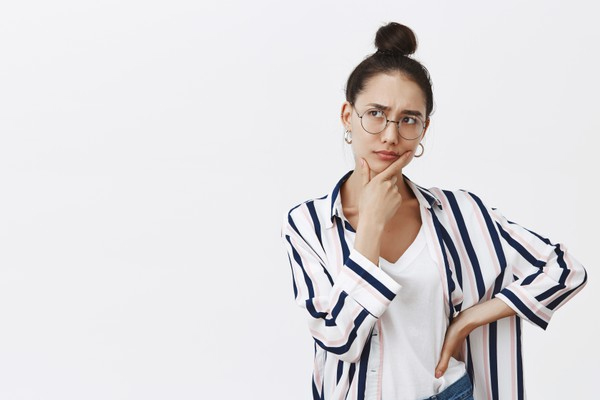
It is a thoughtful way to teach. I can imagine allowing people to open up in the space of comfort. That’s very important. You seem to be knowledgeable about it. I can already tell you will be an amazing teacher.
Lara, you want to be a facilitator, you told me before.
I’m interested in this. It’s an exciting proposition.
Can you do it online? She’s in Canada.
Yes. Go online. The next applications will be opening probably in late October, early November of 2021, and it will kick off in January of 2022.
Rachel?
I’m curious when you say that people have don’t have a good relationship with movement, per se. What does that mean?
They might have related to movement from a place of reward or punishment. Movement is not the thing that you are doing that’s nourishing to your body. It’s the thing that you have to do because you feel like you ate the wrong thing. You are doing this to punish yourself. You are moving in a way where you are maybe not resting and pushing yourself to the absolute limit, like seven days a week. Some of the people who are coming to Inner Workout are looking for a way to move. Inner Workout has a workout in its name. It’s not because it’s a physical workout like if you could do in a workout, it’s not going to make you super toned.
You would probably be a lot more in touch with yourself, emotions and being but that changing your physical body is not the point of it because some of the people who are coming, maybe have only been in environments where they feel like they are coming to the movement because they need to be something other than themselves. We want to make sure that we are doing things, I don’t want to say we are helping them heal but we are giving them a different way than they can approach movement, which then if they decide to do harder physical workouts later on, not with us, hopefully, they can bring some of what they learned in or workout into their other movements.
To understand that intention and bring it forward?
A 'get to-do list' is changing the way we view what we have to do, and rather we are grateful for what we get to do. It changes how you perceive tasks and feel positive about it. Share on XYes.
Especially if you focus. When I was doing a weight training class that I would go through the movements but I was told somewhere that if I were to focus on my intention on what do I want from that, “I want strength. I want balance,” after I do that class or movement that I could leave my body towards those goals of balance and strength. Is that something that you teach, the intention towards moving?
To a certain extent, I feel like ours is a little bit more. We are exploring something together. The biggest thing that we are trying to get people to do is to be curious and understand in the movement portion their body’s own cues. “How do I know when my body feels like it’s done with a movement? How do I know when something feels good in my body?” A lot of times we have approached things, “I need to do ten reps of this. Everyone is holding the downward-facing dog for this long so I need to hold it for this long,” and have never even considered, “I have agency here. I can figure it out. This has served me long enough. I’m going to go into the child’s pose. I need to spend a little bit more time in the shoulder role and hold it a little bit. Open me up and I feel like I can do that without having my teacher wonder why I’m not following them.” That’s why we don’t call people who are trained Inner Workout teachers, we call them facilitators because we believe that people are the experts in their own experience. We are going to guide them through as safe an experience as possible but we are facilitating. We are not telling you what exactly to do.
It’s not like, “Do ten more. Come on.” Go ahead, Lara.
Taylor, have you been able to see some feedback from clients or participants who have been able to take these empowerment feelings that they are gaining through the Inner Workout to enhance their lives in healthy ways? You are touching a point that is amazing to see that if you are encouraging young kids to exercise, they don’t like to be pushed or directed and want to have their own control. I’m curious to see how that evolution takes place with people who are changing their lives after they have been doing your Inner Workouts for a while. Have you seen that?
I definitely feel like people will say that they feel more connected to themselves. It has also been a little bit different because I used to have regulars who would come to certain classes. We are not doing Zoom classes in the way that a lot of places are. They are taking on-demand classes on their own time. I’m not having that level of interaction. Where I do see a lot of the changes is, we have a six-week course that is related to the Take Care Assessment. You take it, dive into your results, do different exercises each week for six weeks related to each of the five dimensions, and hearing how people have been able to try on different practices, rituals and approach the way that they talk to themselves in different ways, that has been cool. Inner Workout classes themselves can offer you that the more that you do them but we also have this other side of the business that more tactically gives people the skills to do that. Whereas in the Inner Workout class, it’s a little bit more implied.
That’s inspiring.
Michelle?
I was in India and I did a little bit of studying the Ayurveda and yoga in practice. I can remember telling one of my teachers that, “I’m going to go back. I’m going to start taking yoga classes again.” She laughed at me because she said, “Why would you take a class? It’s your yoga practice. It shouldn’t be what somebody else tells you to do. It should be from within.” I feel like with you, Inner Workout looks at the individual and tailors it individually. It’s an individual workout and an Inner Workout, as opposed to, “This is great for the masses. You should do this.” I like that. I feel like that speaks to me a lot.
Taylor, your Instagram posts are beautiful and inspiring. I came across one that I wanted to ask you about. You said the words, “I am a very black woman building a business. A very black woman creating spaces for healing and introspection, sharing my story. As someone who spent much of my life prioritizing white perceptions and opinions, this is a revolutionary act.” I wanted to know if you could touch on that, especially with all the social injustices that are coming out at the forefront and everything that’s happening in our community. I love that you said this. I wanted to know why you felt the need to write that.
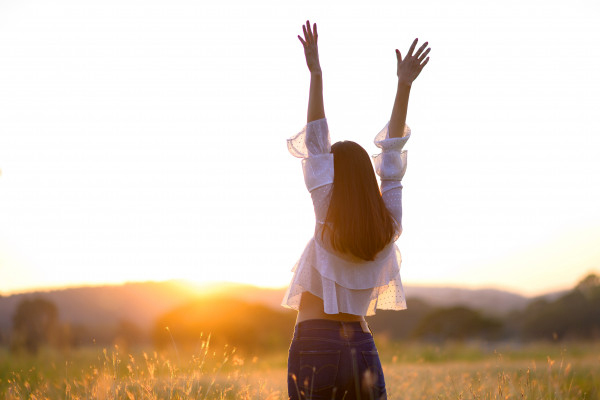
When you look at the wellness space, traditionally, it’s focused on people on white, then women. That is the ideal to, which you are supposed to aspire, regardless of, whether or not that is accessible to you. When you look at who is leading different practices even if there are practices that are rooted in indigenous cultures or other cultures, that this is often someone who doesn’t have that experience. We could get into a whole other thing about appropriation versus appreciation and who you are learning from. It’s important to me to show up as my full self as I’m building this class and to be someone in wellness who does not have the traditional wellness look because everyone deserves to be well. I would love to see the next generation of wellness founders look a lot more like what the country looks like and how to have people feel like this is a space that they can be in and can thrive in not just at the practitioner level but at every level.
I want everyone to feel like they can experience wellness and can come into a class where they are accepted, seen and they don’t have to change part of themselves to enter into the class. I want practitioners who are diverse and committed to creating diverse spaces. Something that we talk about in the facilitator training is thinking about where you are teaching in our workouts. Are you only teaching them in certain environments? How can you bring it to more people? That will look different for everyone. I also want people to feel like they can be leaders of wellness companies as well. It doesn’t just have to be that the Black people are the personal trainers and that’s it. You can also run a wellness company as a black person. I believe a lot in representation in every aspect of life. By me showing up and running the business the way that I do is a revolutionary act. I’m excited to keep doing it.
That struck me and I loved reading that. It was in tune with your mission. I appreciate that you wrote that. You used your platform to put that out there for sure. What is your get to-do list, Taylor?
My get to-do list after is I might bring my dog to my parents’ house. It was my mom’s birthday. We had a birthday dinner and I didn’t bring my dog. Now she’s requesting to see her granddogs. I’m probably going to do that and then I’m probably going to take a nap and relax. We finished out an Inner Workout facilitator training cohort and had a closing circle. I had to make some big decisions. I want to spend the rest of my day resting with the people and the four-legged creatures that I love.
For those of you that don’t know, Taylor makes her to-do list titled Get To-Do list. Why did you decide to do that?
It’s like those little things that can change like you were talking about with the weights and having an intention can change how you perceive it. I still have a full plate and being able to see things as what I get to do rather than I have to do all of these things. It’s like, “These are things that I get to do.” I was having this conversation with my husband even those big decisions that I have to make. Things like years ago was a pipe dream that it would be possible that I would get to have this decision. This problem that I’m having is a problem that I feel so grateful that this is a problem for me. It gives me a little way to be like, “These are all gifts. Even though it’s annoying, frustrating sometimes and overwhelming, I’m blessed to be able to do these things.”
I write to-do lists all the time and wrote the word, “Get.” It totally has a new perspective on gratitude. “I get to go do this and that.” I loved that you did that. Thank you, Taylor, for showing us that we can work on ourselves, personal development for collective change. If our guests would like to contact you, how can they do that?
My websites and Instagram are the best ways to see what I’m up to so Inner Workout’s website is InnerWorkout.co. My personal website is TaylorElyse.com. I’m on Instagram, @TaylorElyseMorrison and Inner Workout’s Instagram is @InnerWorkout.
Thank you. I’m going to change my workout because I’m tired and I didn’t sleep well. Instead of doing my 5-mile run, I’m just going to go for a walk. I’m going to listen to my body and do some stretching. Thank you for joining us on the show.
—
Welcome to Favorite Things with Taylor Morrison. This is our adult show and tell. It’s so much fun to see what everyone loves to do, what makes them feel joyous and happy because we know that the more that we focus on positivity, the more that will attract into our lives. Michelle, tell us about your favorite thing.
This is vulnerable of me. This is real but I’m excited to do that because we should do more of that. These are coconut bras. I had a great first date with the man that I’m seeing and we both shared a lot of humor. He was trying to come up with a fun excuse to ask me out again so it turned out the day he wanted to go out was National Coconut Day. We have been joking. I showed up and I had a jacket on. He drove me wherever. We’ve got out, I took off the jacket and there I am. I had a shirt underneath but I was wearing a coconut bra. We sat there and laughed hysterically. That’s all fun and good but the reason why I’m mentioning and thinking about it is that I’m finding joy in everything. I felt so happy and silly. That was great and free. If he liked it, great. If he didn’t, then we weren’t meant to be.
I have a feeling he loved it. That’s great. Lara, what’s your favorite thing?
I feel like I’m hooked on this product. I love the scent and I have always loved perfume but I get migraine headaches. On the migraine list of what to avoid right away was perfume. I found these amazing essential oil perfume sticks and the product is called Holistick. It’s Canadian. The one that I use is called Teratai. It has Green Tea and citrus in it. It’s invigorating. I love it. This is my new thing. I feel like I’m hooked. There’s a package of three that you can get so you can change up your oils. They are all paraben-free, absolutely pure and amazing.
Rachel?
Number one, essential oils. I do everything and I wear amber oil all the time. I love using that as a perfume. Michelle, I am so proud of you. I love that you went for it. We all need that. That was such a good belly laugh for me knowing you do that.
I’m new at this dating thing.
Good for you putting it all out there like, “If you don’t have a sense of humor, you are not for me.” I love it.
We should be who we are. I am who I am. If somebody doesn’t like it, that’s okay by me.
Where can people get those coconuts?
I got mine on Amazon. Just search Coconut Bra.
I saw the best T-shirt, “Be yourself. Everyone else is taken.” I brought tennis balls. We talked about exercise. Tennis has been something for me that I have always found pride in. I played competitively growing up. I was not good enough to play in college but I have always continued playing. I’m in my 50s and still hitting. I had some back issues and I couldn’t play for over a year. I realized a part of me was taken. There’s something that tennis does for me that fills me up and makes me feel good. It’s good for your body. It’s good engagement. You can play with someone else. To me, it’s such a gift to play. Like your to-do list and get to-do list, I have always felt that way about tennis. I get to play.
I love all your favorite things. Before we get to our guest’s favorite things, mine is my new ring. My husband got it for me. It’s called the Oura Ring. Inside are three little probes. They measure all different areas. If you want to sign up, you can sign up for the COVID-19 temperature study that they are doing, in which they will monitor all the people that are wearing these to see if your temperature has anything to do to go along with COVID. I wear it mainly for my sleep. You can wear it all the time. It measures your sleep in such detail. My sleep was a 74, which is good but ideally, you would like to be in the 80s.
Self-care is listening within and responding in the most loving way possible. Share on XWhat I like about it is it goes into detail about your sleep. It shows your total sleep, efficiency, restfulness, REM, deep sleep, latency and timing. My deep sleep was only eleven minutes. That’s not good. It also says my restfulness was low. It gives you suggestions on different things that you can do. I might need to sleep in a different room than my husband. I’m not sure if he will like that but it does say that I do wake up quite frequently. It showed that I was up for two hours and I didn’t even know that I was awake, which is odd. I must have been lying there in a state but my body was awake. I love wearing my ring because it shows me all the different things that I need to work on. Taylor, how about you?
I bought Throat Coat. It’s a Traditional Medicinals tea. It’s my favorite tea for a lot of reasons. First of all, I love the flavor. It’s got this natural sweetness but you don’t need any sugar and I don’t think it has any sugar in it. I do a lot of talking for my work, whether I’m facilitating things for corporate clients, recording my podcast or facilitating training. I’m talking a lot and naturally, my voice is soft. This is so nice for supporting my throat. I am always cold. My temperature is normally in the 96 to 97 range. I need tea to keep me warm and cozy. This has been my favorite thing. Since the temperature dropped, I have been having 1 or 2 cups a day. It’s the best little treat.
I love how our favorite things are all self-care, looking at ourselves inside and out. Wearing essential oils, Lara, you realize you can’t do it because of your migraines but you can certainly find a way to do it that’s not going to bother you. Rachel, you are going to go play tennis and you are going to have fun doing that. You will have some tea and I will go back to bed because I honestly need a nap. Michelle, you are going to go wear your coconuts. We all need to get those coconuts and show up on a show wearing them. Thank you all for sharing your favorite things on the show with Taylor Morrison. Thank you, Taylor, for joining us.
Important Links:
- Wendi Cohen – Past Episode
- Taylor Elyse Morrison
- Inner Workout
- Take Care Assessment
- @TaylorElyseMorrison – Instagram
- @InnerWorkout – Instagram
- Holistick
- Teratai
- Oura Ring
- Throat Coat
- Podcast – Be School
About Taylor Morrison
 Hello, I’m Taylor Elyse Morrison. I am the founder of Inner Workout and the host of the Be School podcast as well as a speaker and a facilitator. I explore purpose and process to help people and organizations build meaningful rituals for work and for life.
Hello, I’m Taylor Elyse Morrison. I am the founder of Inner Workout and the host of the Be School podcast as well as a speaker and a facilitator. I explore purpose and process to help people and organizations build meaningful rituals for work and for life.
I’ve always been a learner, and not in the academic sense, though I did graduate cum laude from Vanderbilt with a double major in Human and Organizational Development and Spanish. Rather, I like to learn about the ideas that spark my curiosity. The library was one of my favorite places when I was growing up. I’d get an armful of books on all kinds of subjects–ballet, starting a business, Queen Elizabeth. I had a desire to soak up all that I could about any topic that interested me.
I’m still a learner these days. I’ve learned about industries and organizational structures. I’ve worked for a Fortune 100 and been the first full-time employee at a startup. I’ve seen businesses double in size and watched myself change in the process.
I’ve had to unlearn as much as I’ve learned. I’m shedding what should be and inching closer towards my own definition of success. In 2018, I quit my 9-5 and started working part-time as I grew my businesses. In 2020, I transitioned into full-time self-employment.
Here’s how I spend my days:
- Building tools and resources for a life infused with care through my company — Inner Workout
- Hosting personal development conversations for collective change on Be School
- Facilitating transformational experiences in partnership with organizations including Google and FranklinCovey
I’m a true hyphenate — a founder, speaker, facilitator, and podcast host — on a mission to help rid the world of burnout.
Love the show? Subscribe, rate, review, and share!
Join the Grateful Goddesses Community today:
